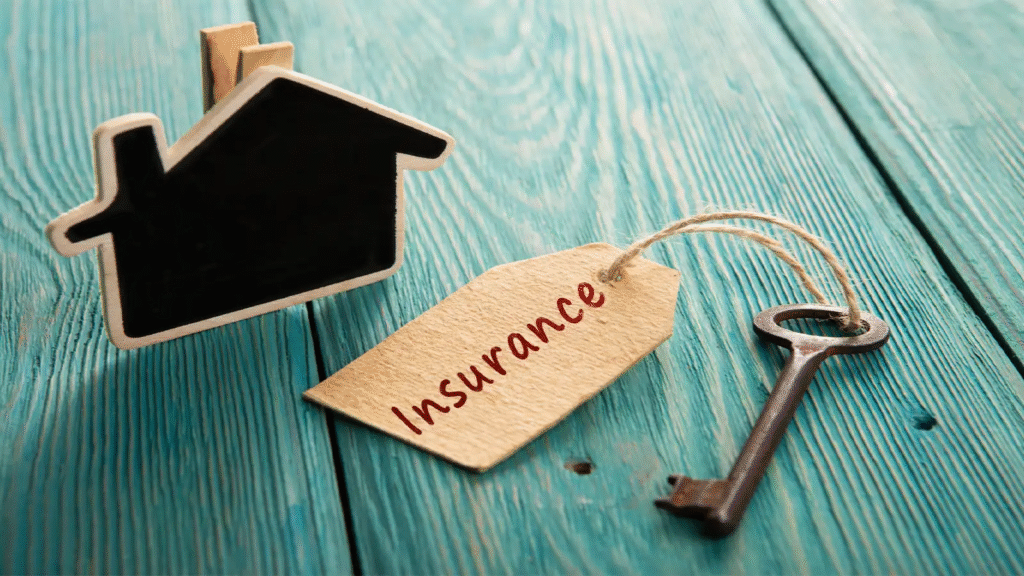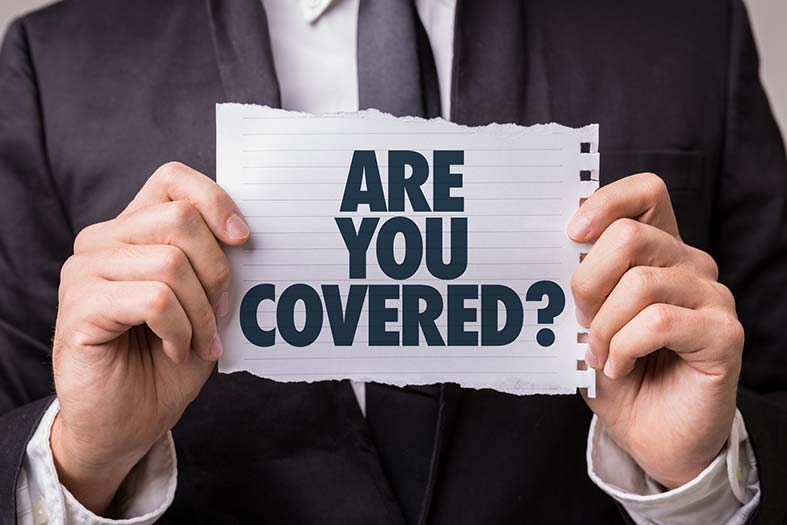Buying a home is one of the most significant investments many people will ever make. Protecting that investment with the right home insurance policy is essential to safeguard your property, belongings, and financial security. However, many homeowners struggle to find affordable home insurance that actually provides reliable coverage without breaking the bank.
So, where can you get affordable home insurance that really covers you? This guide will explore the best strategies to find cost-effective home insurance without sacrificing the protection you need. We’ll break down how home insurance works, what affects your premiums, where to look for affordable plans, and tips to ensure your coverage truly protects you.
Key Takeaways
- Compare multiple quotes from different insurers before choosing a policy.
- Look beyond price — check coverage details, limits, and exclusions carefully.
- Consider local and regional insurers who may offer better rates.
- Use discounts and bundling to reduce your premium.
- Adjust deductibles wisely to balance upfront costs and premiums.
- Maintain your home’s security and condition to qualify for savings.
- Review and update your policy annually to ensure ongoing protection and affordability.
Understanding Home Insurance: What Does It Cover?

Before diving into where to find affordable home insurance, it’s important to understand what home insurance generally covers.
Most standard home insurance policies, often called HO-3 policies, include:
- Dwelling Coverage: Protects the structure of your home from perils like fire, wind, hail, or vandalism.
- Other Structures: Covers detached structures such as garages, sheds, or fences.
- Personal Property: Protects your belongings inside the home, like furniture, electronics, and clothing.
- Liability Protection: Covers legal costs if someone is injured on your property.
- Additional Living Expenses (ALE): Pays for temporary living costs if your home becomes uninhabitable due to a covered loss.
What Isn’t Typically Covered?
When reviewing insurance policies, warranties, or service agreements, it’s important to understand what is not covered. These exclusions help clarify the limits of your protection and avoid unexpected expenses. Here are common areas typically excluded:
1. Pre-existing Conditions or Damage
- Many policies do not cover problems or damage that existed before the policy started.
- For example, in health insurance, illnesses diagnosed before coverage may be excluded.
- For product warranties, any damage that occurred before purchase or coverage activation is usually not covered.
2. Wear and Tear or Routine Maintenance
- Normal deterioration due to use or aging, such as worn tires or fading paint, is rarely covered.
- Maintenance tasks like oil changes, cleaning, or replacing filters are typically the owner’s responsibility.
3. Intentional Damage or Negligence
- Damage caused intentionally or through reckless behavior is excluded.
- This can include accidents caused by illegal activities or gross negligence.
4. Acts of War, Terrorism, or Natural Disasters
- Many policies exclude damage due to war or terrorism unless specifically added via endorsements.
- Natural disasters like floods, earthquakes, or hurricanes may be excluded unless you purchase specialized coverage.
5. Certain Types of Property or Situations
- Policies may exclude coverage for certain items, such as expensive jewelry, collectibles, or business-related property.
- Rental or commercial use of insured items may void coverage if not disclosed.
6. Unapproved Modifications or Alterations
- Alterations or modifications to a product or property that aren’t approved by the insurer can lead to denial of claims.
7. Costs Beyond Actual Repair or Replacement
- Expenses such as loss of use, inconvenience, or punitive damages are often excluded.
- For example, car insurance may not cover rental cars unless additional coverage is purchased.
8. Certain Medical Treatments or Medications
- Health insurance policies often exclude experimental treatments, cosmetic procedures, or alternative medicine.
Why Is Home Insurance Sometimes So Expensive?
Home insurance premiums can vary widely depending on many factors. Sometimes, the cost might feel surprisingly high, and understanding why can help you make better decisions about your coverage. Here are the main reasons home insurance can be expensive:
1. Location of the Home
- Risk of Natural Disasters: Homes in areas prone to hurricanes, earthquakes, floods, wildfires, or tornadoes usually have higher premiums. Insurers see these homes as higher risk for costly claims.
- Crime Rates: Areas with higher crime, especially burglary or vandalism, can increase premiums.
- Proximity to Fire Services: Homes far from fire stations or without access to public water supply (hydrants) can be more expensive to insure.
2. Age and Condition of the Home
- Older homes may have outdated wiring, plumbing, or roofing, which increase the risk of damage or fire.
- If the home hasn’t been well maintained or has known structural issues, insurers may charge more to cover potential repairs.
3. Replacement Cost of the Home
- Insurance premiums are largely based on how much it would cost to rebuild your home completely.
- Homes with expensive materials, custom designs, or larger square footage cost more to insure because the replacement cost is higher.
4. Coverage Amount and Policy Options
- Higher coverage limits and lower deductibles mean the insurer assumes more financial risk, which raises premiums.
- Additional coverages like flood insurance, earthquake endorsements, or valuable personal property riders also increase the cost.
5. Claims History
- If you or previous owners have filed multiple claims, insurers may view the home as a higher risk.
- Frequent claims can lead to surcharges or policy non-renewal.
6. Credit Score and Personal Factors
- In many states, insurers use credit-based insurance scores to help determine premiums.
- A lower credit score might lead to higher rates, as it’s statistically linked to higher claim risks.
7. Deductibles and Discounts
- Choosing a low deductible means you pay less out-of-pocket in a claim but raises your premium.
- Conversely, a higher deductible lowers premiums but increases your financial risk in a loss.
- Discounts for safety features like alarm systems, smoke detectors, or updated plumbing can reduce costs.
8. Market Conditions and Insurance Industry Factors
Reinsurance costs and regulatory factors also affect rates.
When insurance companies face high payouts due to widespread disasters or economic conditions, premiums across the board tend to increase.
Home insurance premiums can vary widely based on factors such as:
- Location: Areas prone to natural disasters or high crime rates typically have higher premiums.
- Home Value and Age: More valuable and older homes often cost more to insure.
- Coverage Amount: Higher coverage limits and lower deductibles increase premiums.
- Claims History: A history of claims can lead to higher rates.
- Credit Score: In many states, insurers use credit scores to help determine premiums.
- Home Security: Homes with security systems and fire alarms may get discounts.
Knowing these factors helps you understand what drives cost and where you can make adjustments to find affordable rates.
Where Can You Get Affordable Home Insurance That Really Covers You?
1. Shop Around and Compare Quotes
The simplest way to find affordable home insurance is to compare quotes from multiple providers. Insurance rates can vary dramatically from one company to another. Use online comparison tools or consult with insurance agents who represent multiple companies.
2. Consider Regional and Local Insurers
National insurers like State Farm, Allstate, and GEICO are popular, but regional or local insurance companies can offer competitive rates and more personalized service. Sometimes smaller insurers have lower overhead costs and better rates in specific areas.
3. Check Discounts and Bundling Options
Many insurers offer discounts if you:
- Bundle your home insurance with auto or other policies
- Install security devices or smoke detectors
- Have a claims-free history
- Pay annually instead of monthly
Always ask about discounts and consider bundling to reduce premiums.
4. Adjust Your Deductible
A higher deductible means you pay more out-of-pocket in the event of a claim, but your monthly premiums will be lower. Evaluate what deductible level you’re comfortable with and see how it affects your premium.
5. Improve Your Home’s Resilience
Some insurance companies offer lower rates if your home has hurricane shutters, impact-resistant windows, updated electrical systems, or fire-resistant materials.
6. Use an Independent Insurance Agent
An independent agent can provide quotes from various insurers and help you find the best value for your needs. They also help ensure the coverage you get really matches your risks.
7. Review Your Coverage Regularly
As your home value and circumstances change, so should your coverage. Regular reviews help prevent overpaying or being underinsured.
Online Platforms to Find Affordable Home Insurance

Some popular online platforms to compare and buy home insurance include:
- Policygenius: Great for comparing multiple insurers and offers expert advice.
- The Zebra: Known for easy-to-use quote comparisons.
- Lemonade: An online insurer offering competitive pricing and fast claims.
- GEICO, Progressive, and State Farm: All have online quote tools and strong reputations.
Tips to Make Sure Your Affordable Home Insurance Really Covers You
1. Read the Policy Carefully
Don’t just look at price; read the terms, limits, and exclusions carefully.
2. Confirm Replacement Cost vs. Actual Cash Value
Make sure your policy covers replacement cost, not just the depreciated value of your belongings.
3. Understand Liability Limits
Check that your liability limits are high enough to protect your assets.
4. Check What Natural Disasters Are Covered
If you’re in a flood or earthquake zone, consider additional policies.
5. Keep an Inventory of Your Belongings
This makes claims easier and ensures you have adequate coverage.
Common Mistakes to Avoid When Shopping for Cheap Home Insurance
- Choosing lowest price only: You might end up underinsured.
- Ignoring policy exclusions: Some cheap policies exclude important risks.
- Not reviewing credit score: A low credit score can inflate your premiums.
- Not asking for discounts: Many savings opportunities go unused.
Also Read :-Which Car Insurance Provider Offers The Best Coverage?
Conclusion
Finding affordable home insurance that really covers you is absolutely possible with the right approach. The key is to shop around, understand your coverage needs, ask about discounts, and avoid common pitfalls. Don’t settle for the cheapest policy without making sure it adequately protects your home and belongings. With a little research and smart choices, you can secure peace of mind at a price that fits your budget.
FAQs
1. Can I get cheap home insurance with a poor credit score?
Yes, but it may be more expensive. Some insurers don’t use credit scores, or you can improve your score to reduce rates.
2. Does home insurance cover natural disasters?
Standard policies usually don’t cover floods or earthquakes. You need separate policies or endorsements for these.
3. How much home insurance coverage do I need?
You should have enough to rebuild your home at current construction costs and replace your belongings.
4. What factors affect home insurance premiums the most?
Location, home age/value, coverage limits, claims history, and credit score are key factors.
5. Can I switch home insurance companies anytime?
Yes, you can usually switch at your policy renewal date without penalty.
6. Are discounts really worth it?
Yes, bundling and safety feature discounts can significantly reduce premiums.
7. What is a deductible and how does it affect my premium?
A deductible is what you pay before insurance covers the rest. Higher deductibles lower premiums but mean more out-of-pocket costs during claims.



